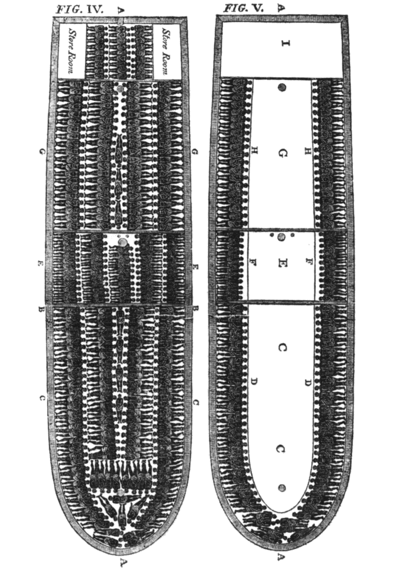Slave Ship Lotus
 My husband and I have moved around a lot in recent years, and each move has involved a pretty major purge of possessions. Every time, I swear that I will never buy a single thing again, and–after the annual or bi-annual transfer of hundreds of pounds of books to a new apartment–almost every book we have owned that did not relate to our careers has fallen victim to these purges.
My husband and I have moved around a lot in recent years, and each move has involved a pretty major purge of possessions. Every time, I swear that I will never buy a single thing again, and–after the annual or bi-annual transfer of hundreds of pounds of books to a new apartment–almost every book we have owned that did not relate to our careers has fallen victim to these purges.
Except for two that sit on our coffee table today. My husband has encouraged me to let them go many times, but I hang on to them. They are two dated, used books that I have never read: The African American Family Album and The Chinese American Family Album. The books are basically visual histories of these two ethnic groups in the United States.
As we prepare for the birth of our daughter, whose blood will flow with both African American and Chinese American identity, I realize that I have been keeping the books all these years for her. I imagine her flipping through them as a pre-teen when she’s bored and waiting for a friend to call, maybe asking her parents about one of the photos over dinner, giving us a chance to talk about her heritage. This is my secret plan.
Yesterday, I was perusing the one about African American history, and I was startled by a full-page black and white photo of a young black man sitting on a beach with his hands confined in metal cuffs, covered and entangled in a large human-sized net. He is looking straight at the camera with a totally blank stare, but one can just imagine all that he is thinking and feeling, all that has been in his life up to now and all that may come. It is a terrible image of the beginning of slavery.
It is an image that makes me think twice about leaving these books out for my daughter to come across unsupervised. At what age is it appropriate to introduce a child to an image like that? Or to films like 12 Years a Slave? When do you tell your baby girl that people captured and owned and beat and raped members of her family? At what age will she come to eat from the tree of knowledge and graduate from the sheltered childhood we hope to provide, full of hugs and kisses and first snowfalls and Christmas tinsel? At what age will she lose her innocence and shed tears for the first time for the world’s brokenness and cruelty?
A few pages later in the book, there are drawings of the ships that carried my daughter’s ancestors across the Atlantic. They are familiar and disgusting images. One drawing in the book is the well-known diagram of a ship, as though cut in half horizontally and viewed from the sky, showing human bodies packed neatly and compactly as though blueprints for a giant sardine can–the efficient and inhumane sleeping quarters for human “cargo”.
This particular drawing became seared into my memory when I visited–of all places–the Rubin Museum in Chelsea, which is devoted largely to art of the Himalayas and the religious traditions that permeate this region of Asia. The museum often tries to draw connections between Himalayan traditions and other world traditions like Eastern Orthodoxy or African American experience, and I remember the piece that struck me most the first time I visited was a giant installation over the main stairway of the building. It was a huge circluar piece of etched glass that, from a distance, looked like a lotus flower–a common Buddhist image. But when you got closer, you saw that each petal of the lotus was actually that diagram of the sleeping quarters of a slave ship.
For some, this use of the horrific slave experience to create a delicate flower might seem jarring or even offensive. But I understood it right away as a Christian. Because it is just a different version of our own cross, a symbol of imperial torture and oppression, which we today guild and illuminate and suspend gloriously from the wall in our sanctuaries. These images of beauty cut from calamity are visual representations of resurrection, of the bold conclusion and hope that good wins and no cruelty or evil will have the final word. It is not a glorification or romanticization of evil. Instead it is a divine subversion–a refusal to allow cruelty to make our world ugly.
So on that day when my baby learns that there are hate and horror–chains and nets and captivity–I will take comfort in knowing that, for the rest of her life, we will be striving to teach her the message of the cross, of the Christian story, of our difficult and broken histories. The message that, with God, we can build goodness and beauty out of what is evil and broken.
Don’t miss our worship this Sunday at Church of the Village, as we commemorate Black History Month with jazz vocalist, Natalie Carter-Prince.

Comments are closed, but trackbacks and pingbacks are open.